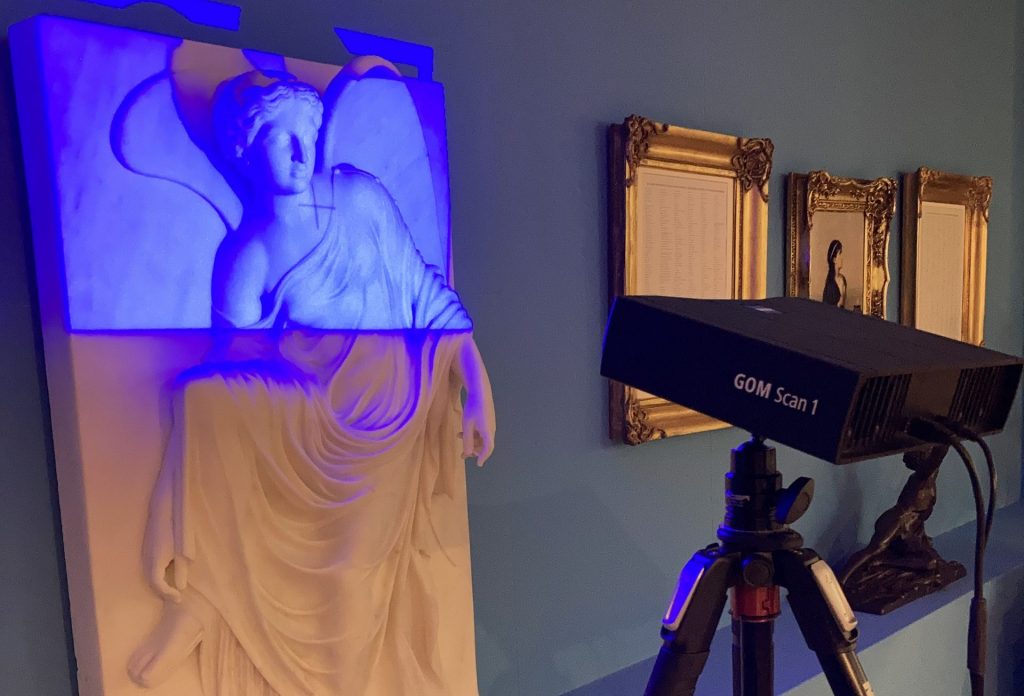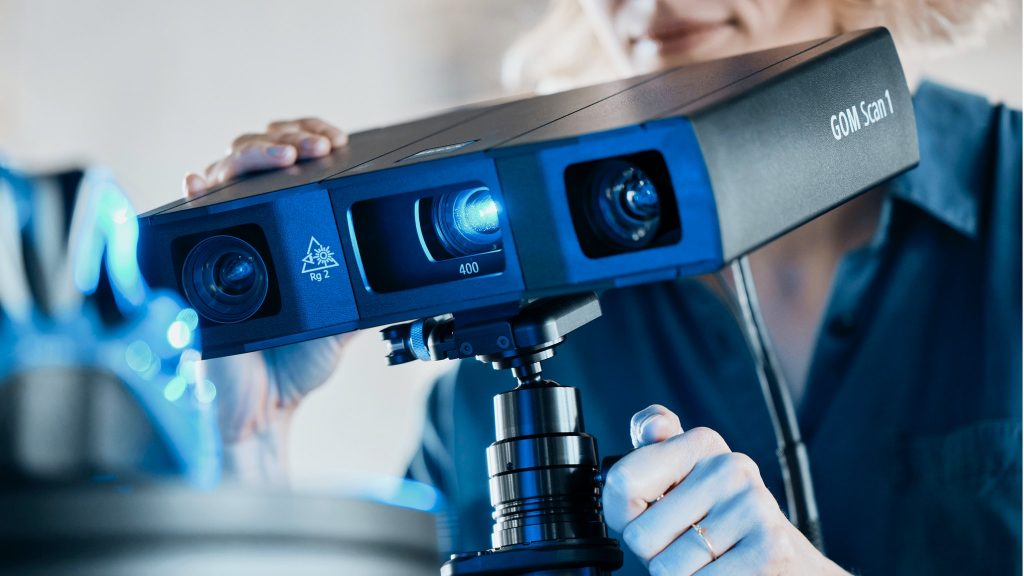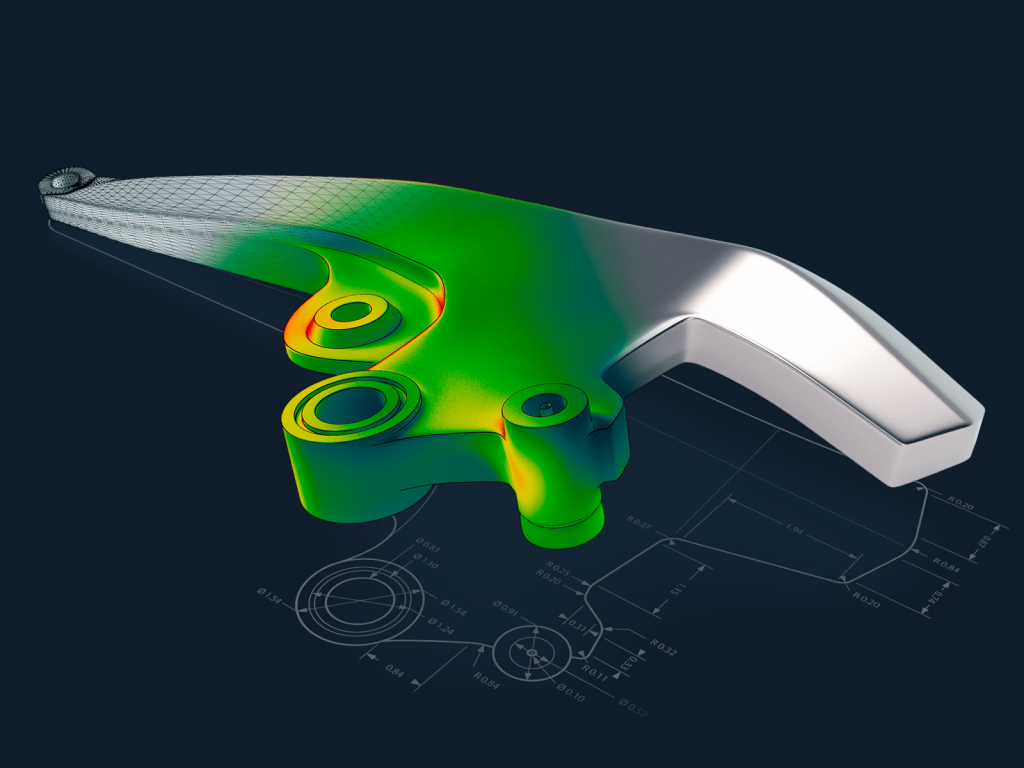The goal: a precise scan for the replica of the statue Nike
The War Museum in Greece is the largest museum of military history in the country and one of the largest in Southeastern Europe. It collects relicts of Greek history from all wartime periods. In honor of approx. 1600 Philhellenes who offered their services and often even their lives for the liberation of Greece, a monument is planned at the war museum.
For the Monument of Philhellenes the corrected statue of the well-known Nike (Goddess of Victory) needs to be replicated. The replica will be embossed in the center of the monument (Fig. 1).
For this project, a 3D scan of the original statue is created in this application example. The data collected will later be used to produce the marble duplicate using a CNC cutting machine.
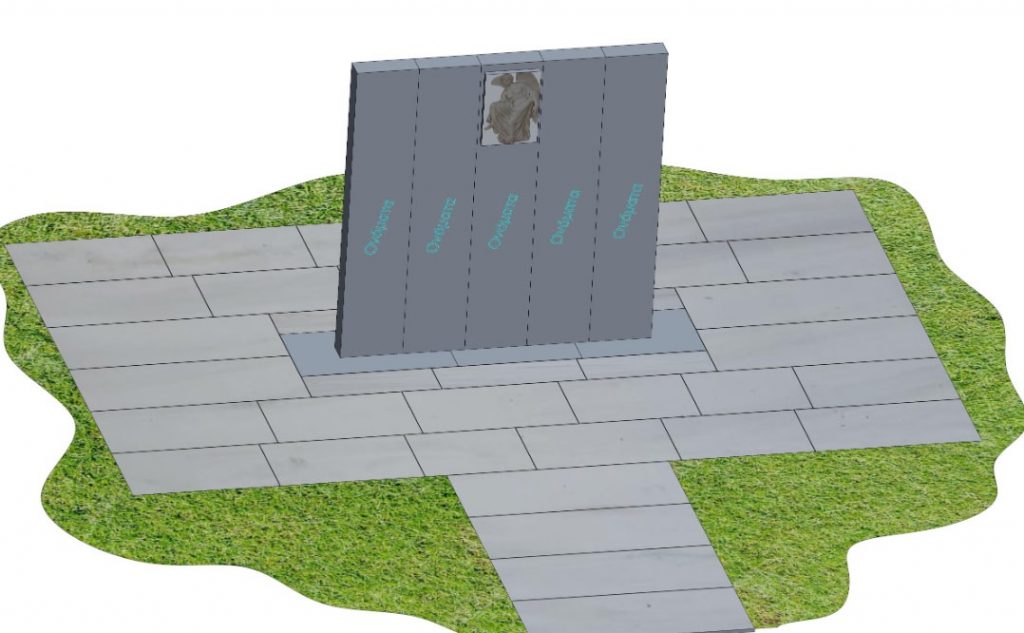
The challenge of scanning
The challenge of the application is the creation of an exact scan and later duplicate of the statue.
The work here is complicated at first by the application environment. The confined space as well as the mounting of the statue on the wall makes scan data collection tricky.
With measurements of 1,2 m by 0,60 m the statue is a fairly large object to scan. Besides that, the original is characterized by the numerous details which should be maintained as best as possible. In order to achieve a realistic replica of the statue all details need to be collected accurately and reliably.
Both requirements have to be taken into consideration when scanning the Victory of Goddess.
The scan data must be as exact as possible since the statue is cut out of a marble block using a CNC marble cutting machine.
The solution for exact 3D scans
The digitized statue was the missing puzzle piece for the following replication.
In order to scan as fast and precise as possible, GOM Scan 1 was used. Due to the fringe projection (stereo camera approach) and the blue light technology, the 3D scanner provides detailed and accurate meshes.
The light weight and compact shape of the GOM Scan 1 turned out to be particularly suitable for confined spaces of a museum. The measuring volume furthermore allowed the collection of fine and small details as well as the digitization of the medium-sized part.
Curious what else the GOM Scan 1 has to offer?
Lino Integrated Printing Solutions executed this task. As a long-standing partner in our network, Lino is experienced in the use of 3D scan technology. Based on years long experience, they chose the GOM Scan 1.
Michalis Bratsolias from Lino Integrated Printing Solutions reported that using the fringe projection technology, it was even possible to scan the whole statue almost without reference points.
The scanner operates with the GOM Inspect software. It was extensively used to digitize the statue. Step-by-step it guided the user through the scanning process. Thus, an accurate measuring was possible due to the constant reassurance of the software.
In the museal application, the sensor and GOM Inspect software were simply the perfect duo:
One stop solution to scan, edit, repair and even more.
Michalis Bratsolias
Have a look behind the scenes
Ready for some behind the scenes footage of the application and the final result of the replica? Keep scrolling to see the GOM Scan 1 in action!
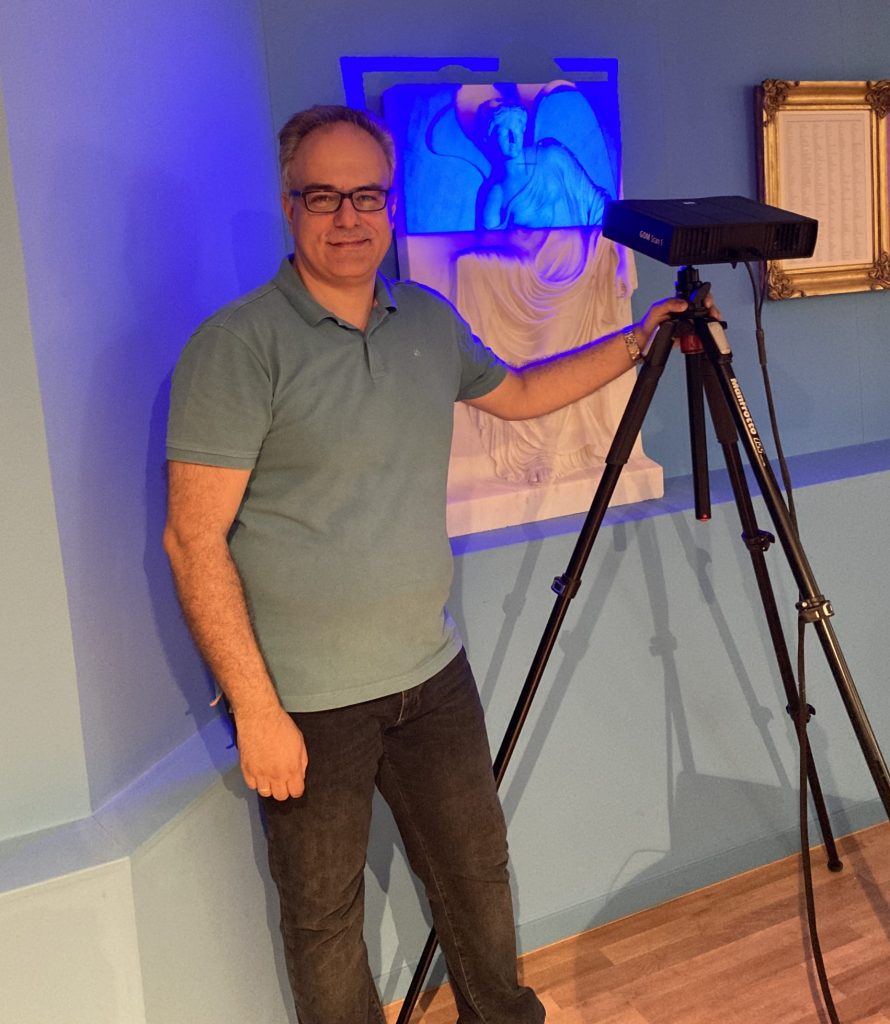
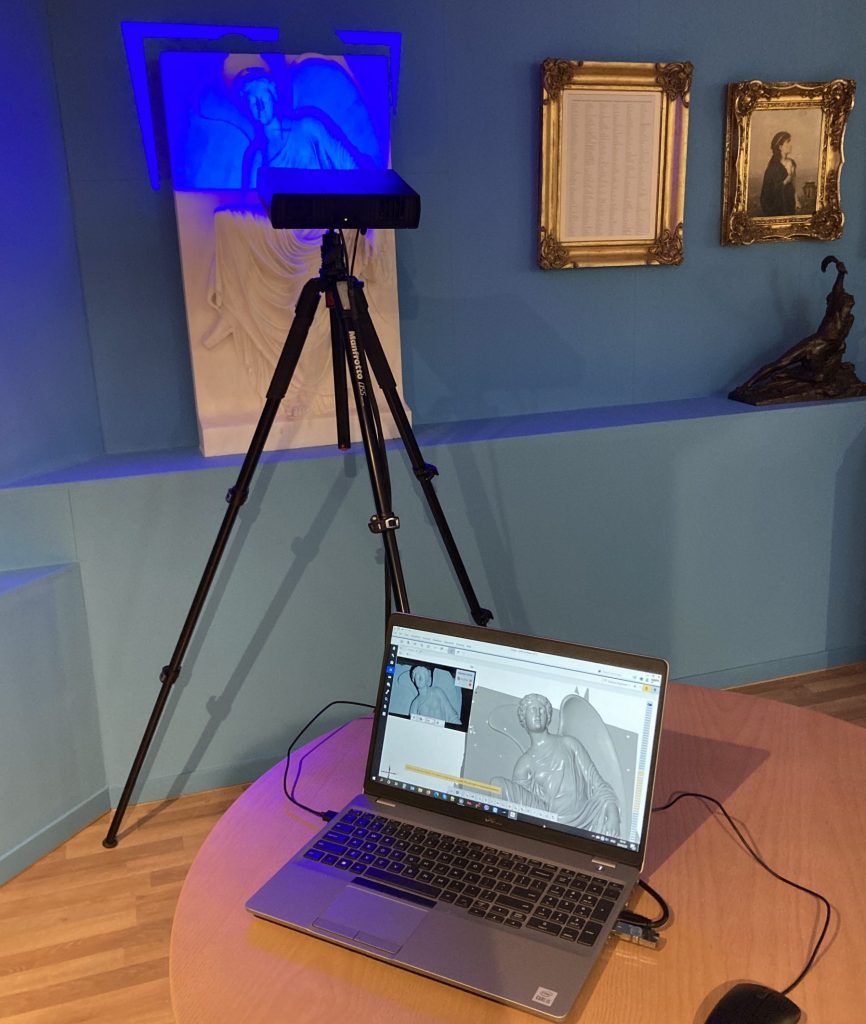
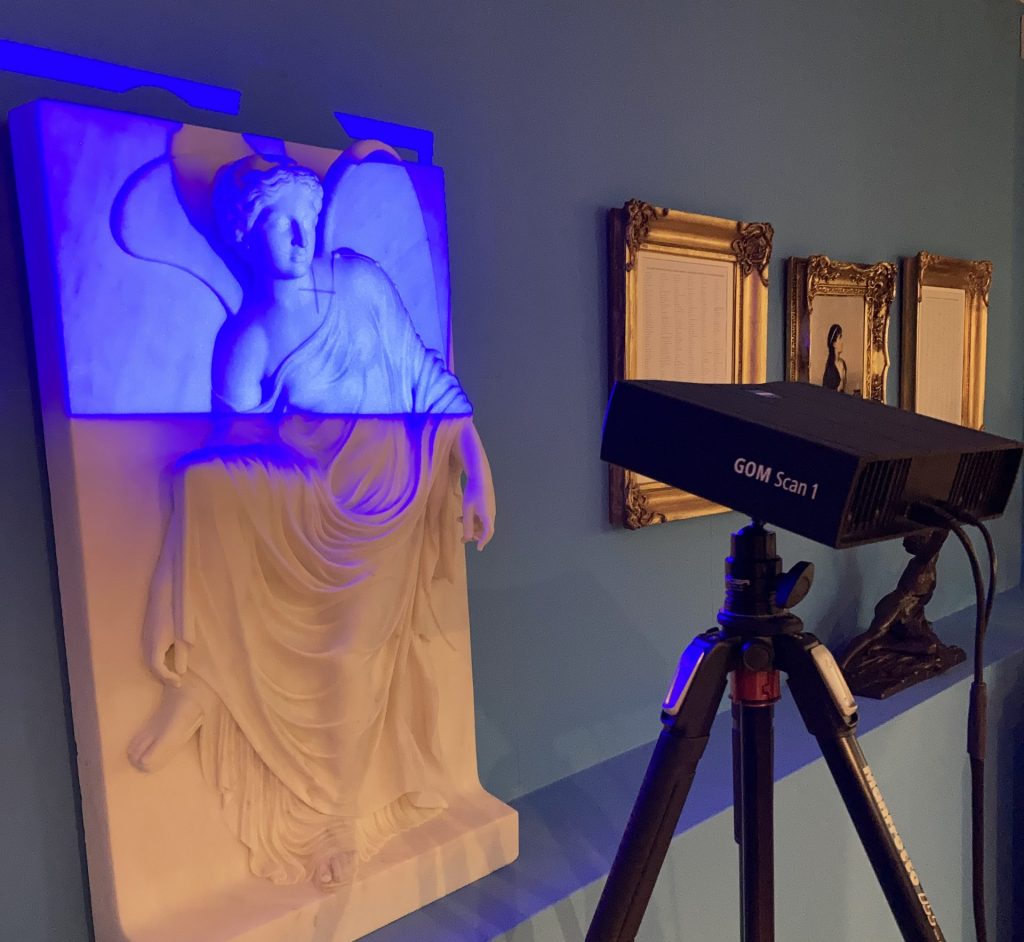
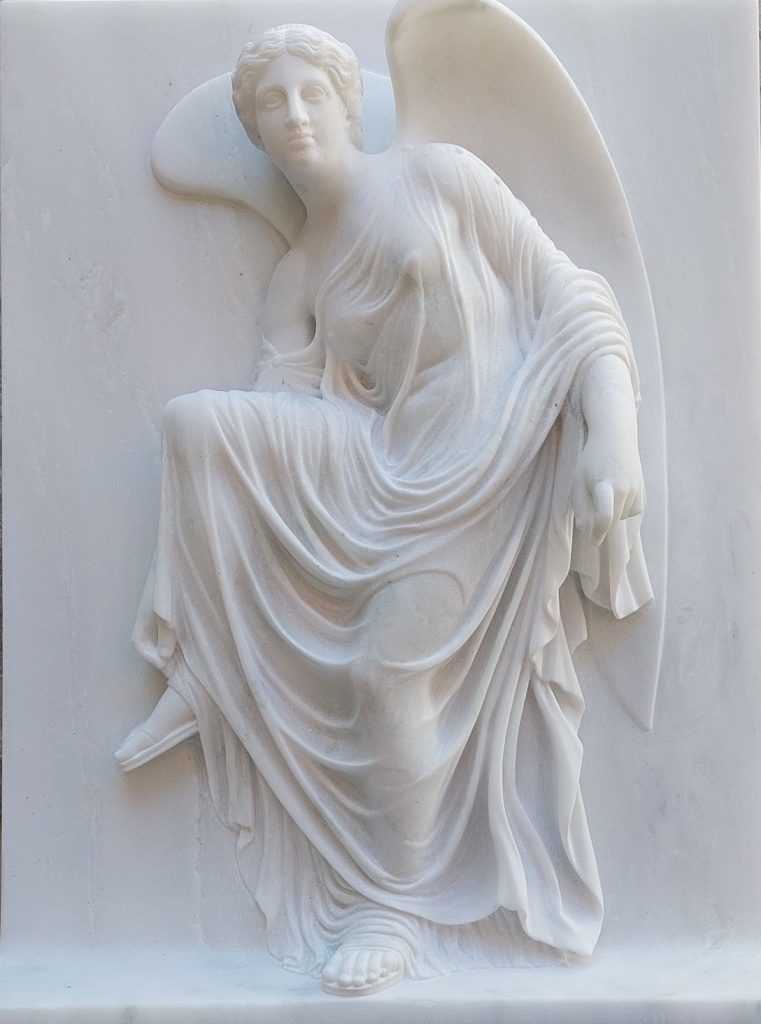
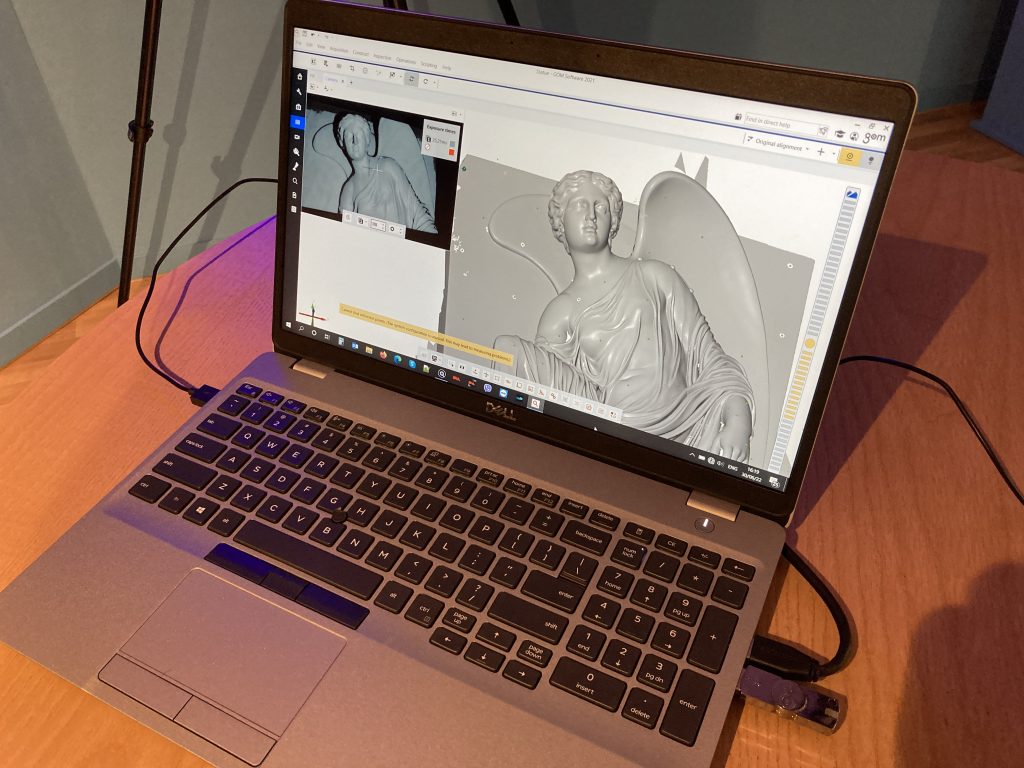
One software for your individual inspection needs: GOM Inspect
Thank you to Lino Integrated Printing Solutions for sharing the interesting application example, showing the divers uses of the GOM Scan 1.
